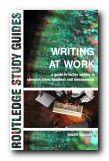guidelines for effective business communications
 If you have received bad service, faulty goods, or unfair treatment, it’s often a good idea to write a formal letter of complaint.
If you have received bad service, faulty goods, or unfair treatment, it’s often a good idea to write a formal letter of complaint.
It is perfectly within your rights to register a genuine complaint.
Modern business practice is to put the customer first, and a letter of complaint will register the fact that you have a serious grievance.
A letter of complaint can be more effective than a verbal response because –
- you are less likely to become angry
- it avoids a heated argument
- the letter is a permanent record
- your complaint is more difficult to ignore
Writing the letter of complaint
First decide what specific outcome you want from your letter.
Choose one or more of these outcomes:
- action to rectify a problem
- compensation in goods or services
- your money returned
- the goods replaced
- a written or spoken apology
If you don’t know, then don’t bother writing.
Step Two
Decide where you are going to direct your complaint.
If it is a small business, you should address your remarks to the manager.
If it is a large company, you might do better addressing your letter to its customer services department at the firm’s head office. They have good reasons to help you:
- it’s their job
- protecting their reputation
- monitoring their staff
The size or ‘cost’ of your complaint will be a much smaller matter to a head office than to a local branch – so you have a better chance of success.
In both cases you need the full postal address.
Step three
You need to make the letter of complaint look as business-like as possible.
It needs to contain a number of key items as a minimum
- your name and address
- the name and address of the recipient
- the date
- a title announcing the subject
- the body of the letter
- your signature
Use A4 sized paper, not a notepad or lined writing paper.
If you are writing by hand, write as neatly and clearly as possible.
If you are typewriting or using a word processor, select a legible font.
If you are using email this will put you to less trouble, but make sure the letter contains all the basic minimum requirements.
In all cases, follow the layout shown in the example that follows.
Example
| The Manager Polly’s Boutique Market Hall Street Stockport SK3 1BU |
Mrs C Bailey 24 Westleigh Clifton Road Stockport SK4 6RT |
| 14 December 2009
To whom it may concern Complaint about faulty goods purchased at ‘Polly’s Boutique’ I write to ask for a full refund on the handbag I bought in your Stockport branch on 12 December this year. I took the handbag back to the store but the shop assistant was most rude in telling me that I wasn’t entitled to a refund as I had used the handbag. This is not a case of my having changed my mind but one of goods not being fit for purpose. The stitching has come apart and this shouldn’t happen as a result of normal wear. Please contact me immediately and assure me that you will give me a refund. I do not want a replacement as this model of handbag is obviously flawed in its design. You can contact me at the address shown above or by phone on 0161 432 9763 Yours sincerely Christine Bailey |
|
Step four
When writing the letter of complaint it’s important to keep these things in mind
- don’t get angry or abusive
- stick clearly to the facts
- keep calm and respectful
- don’t make any threats
If you vent your anger on the person reading the letter, you are less likely to gain their sympathy or a positive response.
If you make any sort of threat, they could classify your letter as abuse and call in their lawyers.
If you get the facts wrong, they are entitled to challenge your claims.
Step five
Always keep a copy of your letter.
© Roy Johnson 2010
More on How-To
More on literary studies
More on writing skills
